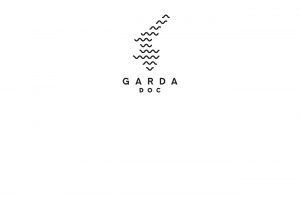Enjoyable all year round, Lake Garda is inviting even in the cooler winter months, with its dramatic technicolour sunsets as arresting as in summer. The mild climate is an invitation to enjoy the lake’s poignant beauty in an evocative and exclusive atmosphere, protected from the boisterous summer buzz. One can experience the distinctive elements of the Garda landscape with greater intimacy: from the enveloping local flora to parish churches, from the villages, custodians of an ancient food and wine tradition, to the hibernating vineyards protected by centuries-old drystone walls. An unforgettable and unique journey waiting to be savoured at length. Garda’s identity reflects the wine it produces, making everyday life more special and nuanced. Take a seat in a bar overlooking the lake and relish a glass of Garda DOC Merlot or Garda DOC Cabernet Sauvignon.
Denomination of denominations
This unique territory, illuminated by shimmering water and the history of the people from the various provinces united by the lake, is the birthplace of Garda DOC. A denomination that, from its very beginning, has focused on varietal wines that express the individual grape varieties cultivated on Garda shores. A denomination of denominations considering that Garda encompasses ten smaller DOCs from three provinces (Verona, Brescia, Mantua): the renowned Valpolicella, Soave, Bardolino, Lugana and Custoza, and the lesser-explored Valtenesi, San Martino della Battaglia, Valdadige, Colli Mantovani, Monti Lessini, each with a particular and extremely interesting history, culture and landscape. What is it that makes the Garda DOC production area so suited to viticulture? Terroir no doubt: the lake’s mitigating effect on the climate, its daily breezes, the diurnal temperature range that promotes aromatic complexity in the wines, the evenly distributed annual rainfall, the predominant morainic soils, the intensity of the light. What matters most, however, is found in the glass – a sunny, modern wine that reflects the beautiful Garda lifestyle, its splendid locations, the light-hearted feeling of being on holiday. A style that combines culture and conviviality.

Merlot and Cabernet Sauvignon
The introduction of these international red varieties in the Garda DOC likely dates back to the late 19th century. Following the serious damage caused by phylloxera, new grapes, less sensitive than their indigenous counterparts and more easily adapted to the American rootstock, were introduced. Bordeaux varieties eventually expressed themselves admirably on the well-exposed, rather meagre and deep soils of the grassy hills of Garda. Merlot and Cabernet continue to perform particularly well, giving the wines structure and longevity. About 577 hectares of land are currently planted to Merlot, while Cabernet Sauvignon covers about 377 hectares. These grape varieties enjoyed particular commercial success in the 1990s with producers preferring Merlot for its consistent yields and oenological versatility. The late-ripening Cabernet Sauvignon, rich in colour and with fine tannins, reveals fruity and less herbaceous aromas than in cooler regions. Whether as everyday wines or age-worthy reserves, the red wines of the Garda DOC are unique expressions crafted by producers who, for generations, have developed their winemaking artistry on the shores of Lake Garda, aided inevitably by its irreproducible terroir.![]()
Garda DOC red wines to try
 Cantina Ricchi, Carpino Merlot 2017
Cantina Ricchi, Carpino Merlot 2017
89
Brothers Carlo and Giancarlo Stefanoni are third-generation owners of a 45-hectare, energy self-sufficient winery that aims for zero environmental impact. This Merlot from 20-year-old vines has an ample bouquet with notes of plum, blackberry and spices. Well-calibrated tannic register in a vital and pleasant texture. Intense and sleek finish.
 Perla del Garda, Leonatus Merlot 2016
Perla del Garda, Leonatus Merlot 2016
89
Intense, fruity, inviting bouquet with notes of potpourri, herbs, spices and
red fruits. Lively, vibrant and balanced palate with finesse and substance. Aged for 24 months in barriques and tonneaux. The Prandini family have managed 40 hectares of vineyards on the morainic hills south of the lake for two decades.
 Prendina, Falcone Cabernet Sauvignon 2019
Prendina, Falcone Cabernet Sauvignon 2019
88
This Cabernet Sauvignon from the 64-year-old Falcone vineyard offers spicy hints and balsamic notes. Fine and well-profiled on the palate, its tannins are both firm and harmonious. The 50- hectare estate predominantly cultivates international varieties. Acquired by the Piona family in 1958, the property’s origins date back to the 14th century.
 Azienda Agricola Santa Cristina, Cabernet Sauvignon 2019
Azienda Agricola Santa Cristina, Cabernet Sauvignon 2019
88
The appealing, dense ruby-red colour and the slightly herbaceous and spicy aromatic nuances herald an intense
and well-modulated palate that flows towards a long finish. Founded in 1960 by Sergio Zenato, the winery is now run by his wife Carla and children Nadia and Alberto, who have successfully developed and expanded the family project. Alberto looks after the wine production and distribution, while Nadia is responsible for strategic development and marketing.
 Cantina Gozzi, Cabernet Sauvignon 2021
Cantina Gozzi, Cabernet Sauvignon 2021
88
The Gozzi family has produced wine since 1920, and the fourth generation is now at the helm of the estate. This historic, 36-hectare company sits in the heart of the Mantuan morainic hills. This wine, vinified in stainless steel only, is invitingly fresh and fine on the palate with dynamism and crisp pulp. Hints of herbs and red fruit on the fresh nose.
Discover more about Garda DOC
Connect on
Facebook | Instagram








